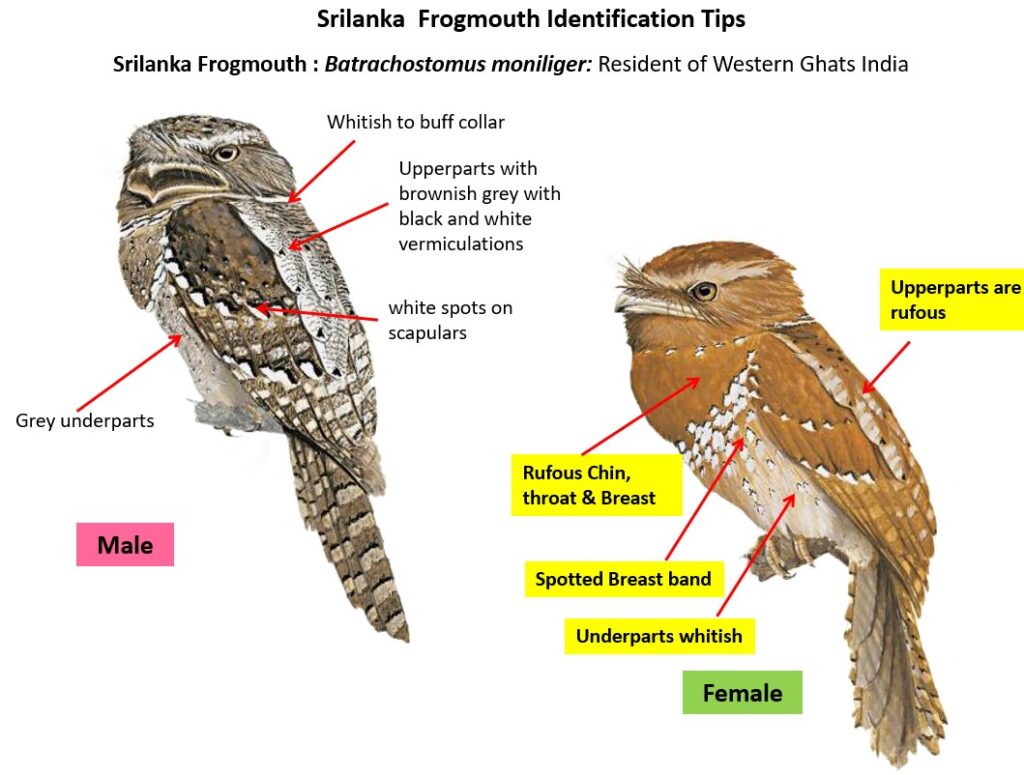
Srilanka Frogmouth Batrachostomus moniliger
Etymology:
- Batrachostomus : Greek word batrakhos- frog; stoma –mouth [ frog mouth}
- Moniliger: Latin word monile –necklace, collar; ger-carrying {Collared}
Vernacular Names: Mal: Makkachikkata, Sinh: Gembi-kata-bassa, Mar: SrilankanBedukmukhi
Distribution in India: Resident in Western Ghats in India.
Description: Size of 22-23 cm. They are small, sexually dichromatic species, with adult coloration and pattern almost constant for each sex. It has a wide and hooked bill with slit-like nostrils and the large head with eyes facing forward to provide a wide field of binocular vision. The male brownish grey with black and white vermiculation, narrow whitish to buff collar across upper mantle, and white spots on scapulars, wing-coverts, belly and irregularly across breast. The female is rufous or rufous-brown and more uniform, with less distinct collar and fewer spots, but more white on ventral region and undertail-coverts. The juvenile female has coloration much as adult female, but with softer-textured plumage; juvenile male also is similar to adult female.
Habitat: It is found in Woodland and evergreen forest; often found in dense vegetation such as bamboo thickets, canebrakes or in second growth, remaining mainly in the understorey; from sea-level to1200 m.
Food Habits: It eats grasshoppers, moths, beetle and other insects.It feeds on insects, catching them in flight or gleaning them from the ground or tree branches.
Breeding Habits: They breed in Jan-Apr in India.. The nest is constructed by both sexes. It is a small circular one composed mainly of the birds’ own down, bound with cobweb and camouflaged using lichen, moss and soft pieces of bark, placed on horizontal branch or in fork of small tree above ground. May nest repeatedly on same branch, but nest itself is destroyed immediately after young has fledged. They lay a clutch of one egg. The incubation is done by both sexes for a week, by male during the day, and by both parents in night.The chicks are provisioned by both adults; fledging period is 23–25 days. The juvenile may stay with the parents for a couple of months, huddling between them at the roost.